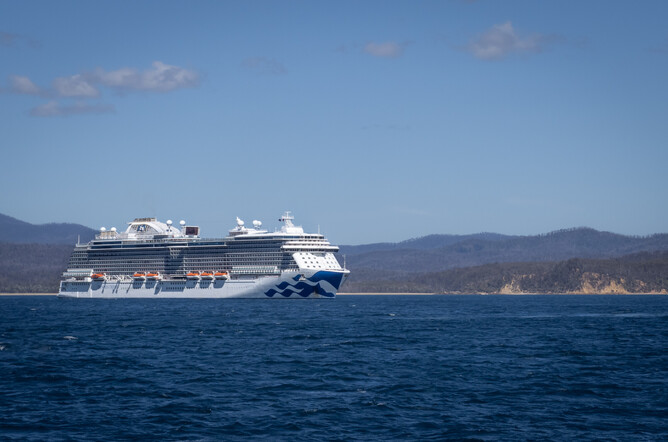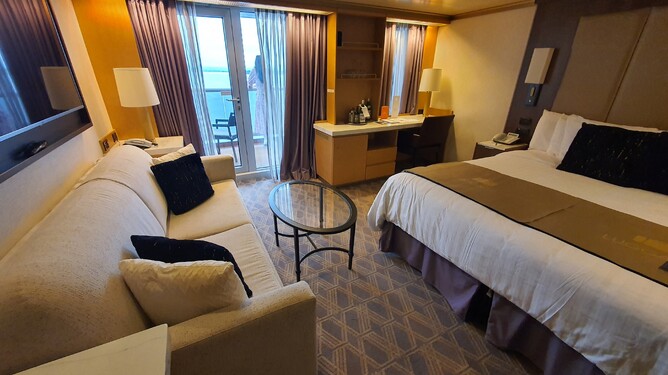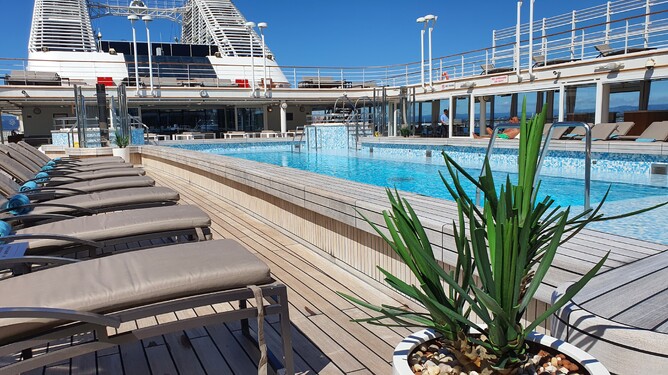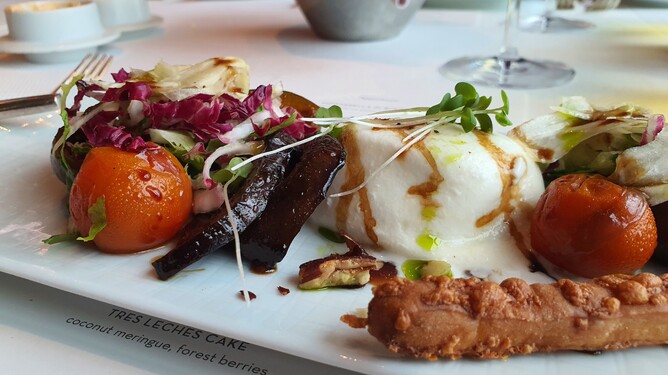I don’t know about you, but the idea of taking a holiday on a cruise ship always freaked me out a little bit.
For one thing, was I going to be the only person on there under the age of 60? What if the boat rocked around heaps and I got seasick? How boring were the “sea days” going to be?
What if I hated it and COULDN’T GET OFF?!
Turns out my fears were all unfounded, but it still took a few years before I finally took the plunge (so to speak haha) and tried it out for myself. Luckily for me, P&O started doing some fab taster cruises that were essentially a long weekend up or down the coast of NZ. So, only a couple of sea days to worry about, and if I hated it – well I figured anyone can cope with a few days. Plus, we decided not to take the kids and how bad could a fully catered kid-free long weekend be?!
CRUISING GUIDE – BEFORE YOU BOOK
I’m a travel broker, so I have access to some pretty great deals – but in this case, the sale P&O had on was even cheaper than the agent rates so we went with that (contact me if you want in on those specials!). Depending on how far out you book and the rules of the special, you will have to pay a deposit up front to secure your cabin and then the rest of the cruise fare will be due around 6-8 weeks before your departure. If you’re booking within a few months of travelling you may have to pay in full straight away. The amount of the deposit can vary but are generally around $100-200 per person.
You can book direct with the cruise line or through a travel broker/agent. Obviously, I’m biased, but I do recommend booking with an agent – they may be able to offer extra value bonuses (like cabin credit, or reduced deposits), they’ll take care of all the groundwork so your booking runs smoothly, and if you have any problems you can deal direct with them rather than battling with phone queues to foreign call centres.
CHOOSING A SHIP
Obviously, every ship is slightly different and the specific facilities can form a big part of choosing who you sail with. Some ships have more of a focus on food variety, others on entertainment features like waterslides, climbing walls, etc. All of them will have at least one pool, spa facilities and plenty of common areas to chill out in if you don’t feel like hanging in your cabin. My husband and I are both fairly introverted, so one of our key concerns was that we’d feel really crowded on a ship with 5000+ people. In reality, most of the time it was hard to believe there were that many people around and we never failed to find a quiet spot to hang out when we felt like it. The only occasions it did feel really busy was at the buffet (easy solution = eat at specialty restaurants)!
Far from being restricted to older generations, cruising has become really popular with a huge demographic of travellers from young honeymooners (a couple actually got married on our cruise) to families, professionals, and yes, retired folk. P&O Cruises are a firm fav with families in particular – where else can you travel for under $100pp per day all inclusive?!
CHOOSING A CABIN
This one can be a bit tricky, as everyone has a favourite and it’s a bit of a balancing act between budget and comfort! Generally though, the cheapest cabins start on the inside (no window) at the back or front of the ship on a lower deck and as you get closer to the middle/higher the price of the cabin goes up. The most popular spot is an outside cabin (called so because it has a window) in the middle of the ship – not only are midship cabins close to all the facilities, they’re also in the most stable part of the ship (less movement) and away from the ship’s engines which can be a little noisy if you’re not used to them. If you’ve got a healthy budget you can often get cabins with a small balcony or a bigger suite room.
I’m definitely a window/like to see the outdoors sort of person, but for our first cruise experience we opted for an inside cabin purely for budget & research reasons.
CRUISING GUIDE -ONBOARD
Our cruise departed from downtown Auckland so we got free weekend parking at Halfmoon Bay (just down the road from Howick) and took a ferry straight to the cruise terminal. The Fullers service takes 20-30 minutes, runs several times a day and only costs around $10pp one-way – much easier (and cheaper!) than trying to find parking in downtown Auckland!
Before you can board the ship you have to go through a customs check including luggage scan (cruise ships are technically considered foreign ground). You’re not allowed to take any liquids or food on the ship with you.
Checking-in for the cruise is just like checking into a flight. You hand over your ID and booking details and instead of a boarding pass they issue you with a keycard. This not only unlocks your cabin door, but is your form of payment for everything on the ship. I’d highly recommend getting yourself a lanyard (like this one – or ask your agent!) so you always have it on you.
Once you have that you’re in, and officially on holiday! Check out your cabin and then head out to explore the cocktail menu.
MY EXPERIENCE OF AN INSIDE CABIN
We booked on P&Os Pacific Pearl, which I’ve actually sold to other people for years as a somewhat budget 3 star ship. Our cabin, even though it was one of the cheapest options, was lovely – nice modern décor and big enough that we didn’t feel like we were tripping over each other. It was about the same size as your average hotel room, but with big curtains across the end wall which made you feel like it had a window even though you didn’t (unless you opened the curtains and ruined the illusion ? ).
The bed was comfortable and we had plenty of room for storage, with a big wardrobe and place to put your suitcase out of the way. The bathroom was pokier than you’d expect in a hotel but, well, ship. The shower was a good size, but you could only fit one person in the bathroom at a time and you had to do a bit of dancing around the door to open and close it.
THE OMINOUS SEA DAYS
As I said, we took one of P&Os taster cruises – so it was a three day cruise split into two sea days and a full day in Napier. In the end, I really loved the sea days. There’s just so much to see and do on the ship from demonstrations, to lectures, art auctions, the casino, live shows, live music and of course just chilling on the deck with a cocktail and a good book! Our time on board flew by and I would now have no qualms whatsoever about jumping on a longer cruise.
KIDS CLUBS
Despite being kid-free I couldn’t help but go and have a peak at the kids clubs (research!) and again was fairly impressed. Well-organised, well-staffed rooms split into two age groups with a wide range of activities including an incredible supply of lego/duploand enough games consoles to keep even the most techy kid happy. They also had a dedicated outside deck space with room for ball games and a small pool. Different ships have different rules around mealtimes, but most people I have spoken to have said they literally had to drag their offspring away from the kids clubs at the end of the day – or even on port days!
DINING TIMES
This is a bit of a hangover from old-fashioned cruising. Different cruising companies have different ways of doing it, but on most you have the option of choosing a set dining time (say, 6pm or 8pm) which you would have to dine at each night, or you can opt for free-dining. Most companies are heading away from set dining times and embracing the free dining idea, so you can eat whenever it suits. It just makes sense when you’ve got so many restaurant choices on board now, as well as entertainment at varying times throughout the evening. The only thing with free dining is that you’ll need to reserve your seat on the day if you want to eat at one of the smaller specialty restaurants, or risk missing out on a table.
THE FOOD
Ask any past cruiser and they’ll tell you that food is one of the best parts of cruising. Most cruise ships have a main restaurant (buffet or a la carte, often one of each), and then a number of “specialty” restaurants. These may include a steak house, Asian fusion, seafood, or degustation. At least one main restaurant is always included in your cruise fare, and although you may have to pay a cover charge for the specialty restaurants, it’s usually pretty reasonable – like around $20-30 per person for a full set of courses. Specialty restaurants are great because, apart from offering a specialist eating experience, they’re also a lot smaller and quieter, and (in my experience) the food is better than the main restaurant. Some of the higher end cruiselines include ALL the specialty restaurants in your fare.
QUICK FACTS
You don’t need a passport if you’re just cruising around New Zealand – a drivers licence or other photo ID will do.
Travel Insuranceis essential on cruise ships (it’s not like they have ready access to a hospital) and depending on your insurance company you may need a Pacific Islands policy even if you’re technically staying close to NZ.
Everything you buy on board is charged to your cabin. You may have to pay a security deposit (like at a hotel), or the ship will freeze what you’ve spend on your card every couple of days so there are no dramas when you go to settle up on your last day.
Watch out for a daily newsletter in your cabin – this will have details of what’s going on that day, what the dress codes are and if there are any theme parties. It’ll become your most important reading while you’re onboard!




